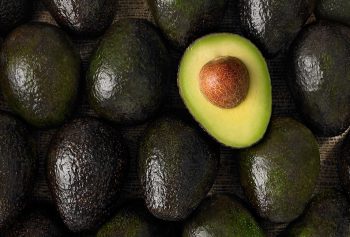Contributing writer for Wake Up World
Don’t waste that avocado pit!
Avocados (Persea americana) are one of the most popular fruits in the U.S., and two-thirds of consumers have purchased them in the past year. According to Hass Avocado Board 2014 tracking1, 60 percent of those purchasing avocados fall into the “lovers/enthusiasts” category, meaning they purchase at least 37 avocados each year. This is particularly striking since as late as the 1970s, avocados were more of a luxury item or a delicacy.
Avocados are actually a fruit, rich in monounsaturated fats that are easily burned for energy. Including them in your everyday diet helps to increase healthy fat without increasing protein or carbohydrates. Avocados are also high in potassium, which helps to balance your vitally important potassium to sodium ratio.
[pro_ad_display_adzone id=”110028″]
In the early 20th century, avocados were still called “alligator pears” due to their green bumpy skin. In a brilliant PR campaign move, avocados were renamed and rose out of obscurity. They subsequently beat the low-fat craze in the ‘80s and ‘90s and found their way into the hearts of Americans. The single greatest game-changer may have been avocado’s entrance into the Super Bowl.2
The California Avocado Commission PR firm held a “Guacamole Bowl” in the 1990s, gathering recipes from NFL players and taste testing them on fans and reporters. But it’s not just the avocado that is rich in vitamins and antioxidants. You might be surprised to find the pit has numerous health benefits as well.
Have You Eaten an Avocado Pit?
While you may be familiar with some of the benefits of eating avocados, this whole time you may have been throwing out the most nutritious part of the fruit. Here are some of the advantages you may enjoy when you take the time to prepare and eat your avocado pits.3
Antioxidant value:
The avocado seed is packed with polyphenols. There are over 500 unique polyphenols, collectively known as phytochemicals.4 Plant-based foods tend to be high in polyphenols and the concentration is affected on how the product is grown, farmed, transported, ripened and prepared.
Many throw out the seed and skin. However, a high proportion of polyphenols remain in the seed.5 Antioxidants are known to combat cell damage, help prevent Type 2 diabetes, boost insulin sensitivity, reduce inflammation associated with heart disease and cancer, decrease blood pressure and play a role in weight management.6 In one study, the antioxidants in avocado pits were also found to protect hamburger meat against oxidation.7
Cancer:
In a study published in Pharmaceutical Biology,8 ethanol extracts of the fruit and seeds were successfully used against Jurkat lymphoblastic leukemia cells in the lab. Researchers found the extract functioned as a proapoptotic compound, killing the leukemia cells through an oxidative stress mechanism.
Another study published in Cancer Research9 found avocatin B, a lipid derived from the fruit, targets leukemia stem cells responsible for recurrence of acute myeloid leukemia. Avocado pits contain biscatechin, a condensed flavenol, which demonstrated antitumor activity in one animal study.10 Unripe avocado fruit have also demonstrated cytotoxic properties in the lab.11
Digestion:
Avocado seeds have been used in South American cultures for centuries to soothe gastrointestinal disturbances,12 and the antiprotozoal and antimycobacterial actions of the seed may have been used to reduce or eliminate diarrheal illnesses. Seed extracts have demonstrated the ability to inhibit the growth of several bacteria a protozoa responsible for disease.13
Using an extract from the leaf of the plant, researchers demonstrated the ability of avocados to help prevent the formation of ulcers after administration of ulcerogenic medications in an animal model.14
Anti-aging:
The oils in the avocado seed are rich in antioxidants helping reduce the free radical damage causing illness and aging. The anti-inflammatory actions also help reduce the signs of aging in your skin. By helping reduce blood glucose levels and to maintain a healthy weight, they may also help reduce aches and pains and keep you energetic.
The seeds may also be useful topically. When they are dried and ground, you can use them to make a homemade face mask and as an exfoliant.15 Combine ground seed with olive oil and a banana, or avocado and lemon juice. The seed helps your facial mask take off external dead skin and is a great addition for a facial massage.16
Avocado — A Real Superfood
To get to the seed you must go through the fruit. You probably know avocados are an excellent source of healthy fats. This whole food also has other unique health benefits protecting you against cardiovascular disease and diabetes, and enhancing your body’s ability to absorb nutrients. A small UCLA-led pilot study17 found eating one-half of a fresh medium Hass avocado with a hamburger significantly inhibited the production of inflammatory compound interleukin-6, compared to eating a burger without the fresh avocado.
[pro_ad_display_adzone id=”110030″]
The findings offer promising clues about the ability of avocados to benefit vascular function and heart health. The avocado also provides 21 percent of the recommended daily value for potassium in a single serving, approximately 1 cup of cubed fruit.18 According to a 2011 study,19 those at greatest risk for heart disease consume a combination of too much sodium with too little potassium. This was one of the first and largest U.S. study to evaluate the relationship between salt, potassium and heart disease deaths.
According to one of the lead authors, potassium may actually neutralize the heart damaging effects of sodium.20 Those who ate a lot of salt and very little potassium were more than twice as likely to die from heart attack as those who ate nearly equal amounts of both nutrients. Although a fruit, avocados are low in carbohydrates and high in fats.
There is evidence suggesting a limited intake of protein may be helpful in long-term health and in the prevention of cancer. Avocados are a tasty and satisfying way to eat a high fat diet while consuming close to 20 essential nutrients including fiber, vitamin E, B vitamins and folic acid.21
In a small study,22 researchers in Japan discovered the avocado contains potent chemicals that may reduce liver damage. Researchers fed 22 different fruits to a group of rats with liver damage caused by galactosamine. When the levels of liver enzymes were measured, the rats fed avocado showed the least liver damage.
Five compounds were tested in rats with chemically induced liver injuries resembling those caused by viruses. This suggested to the researchers an avocado extract may be promising in the treatment of viral hepatitis.23
The Best Way to Get the Most From Your Avocado
To get the most benefit from the avocado fruit, it’s important to take the skin off in such a way that you don’t remove most of the valuable phytonutrients. A UCLA research study24 demonstrated the greatest concentration of beneficial carotenoids are located in the darkest area of green fruit, closest to the inside of the peel.
The California Avocado Commission issued guidelines25 to get the most out of your avocado by peeling it the right way. To preserve the area with the greatest concentration of antioxidants in the fruit, it’s best to peel the avocado with your hands as you would a banana.
Procedure
- First, cut the avocado lengthwise, around the seed
- Holding each half, twist them in the opposite directions to separate them from the seed
- Remove the seed
- Cut each half, lengthwise
- Next, using your thumb and index finger, simply peel the skin off each piece
Keep Your Avocado Fresh
The flesh of an avocado turns brown once it is cut as an enzyme oxidizes the fruit when exposed to air. The avocado has not necessarily gone bad at this point, and you can often scrape off the top brown layer to reveal a fresh green layer underneath. However, it is unappealing, and not many people like to eat brown guacamole. There are a number of tricks to keep avocados fresh for several days once they’ve been cut.
I’ve found storing avocados in the fridge — even while they’re still whole — keeps them fresh for up to two weeks. If you’ll be using only half at a time, leave the seed in the half of the avocado you’re not planning to use. If you’ve scooped the avocado for guacamole, store the seed in the leftovers.
Consider storing an avocado half in a sealed glass jar after covering the open half of the avocado with wax paper. Guacamole should also be stored in a glass airtight container in your refrigerator to reduce oxidation. Other strategies that can help reduce browning include the use of:
- Olive oil: “Paint” a thin layer of olive oil onto the top of the avocado half. This creates a natural barrier to help prevent oxidation. You can use this trick with guacamole too (use a pastry brush to spread the oil on top); however, be aware it will add an oilier flavor and texture to your dip.
- Lemon juice: Lemon juice helps to inhibit oxidation. Rub some on an avocado half or sprinkle some on top of your guacamole. It will add some lemon flavor to the avocado, which may or may not be desirable depending on your taste.
- Onion: Place a handful of large onion chunks into the bottom of the container with the avocado (face up) on top. Alternatively, sprinkle the chunks of onion on top of your guacamole (and remove them when it’s time to serve).
Powder the Pit
This short video demonstrates how to dry your avocado seeds, powder them and store them for future use. Although the seed is off-white when sliced, after being processed in a blender, food processor or coffee grinder, oxidation turns the powder a light pink to orange color. The powder can be stored in an airtight container in your refrigerator for up to 14 days.
Some report avocado seeds taste bitter, while others experience a nutty flavor.26 If your powder tastes somewhat bitter it may be best to pair it with strongly flavored foods. The powder may also be sprinkled over smoothies or your salads to offer a unique taste. Sliced avocado seeds may be used to make tea. Place slices in a tea infuser and pour boiling water over it, steeping for several minutes. You may wish to add a little honey if the seed you have is slightly bitter.27
Sources and References:
- 1 Hass Avocado Board Tracking Study 2014
- 2 The Atlantic, January 31, 2015
- 3 Healthy Holistic Living, Once You Learn This You Will Never Throw Out the Avocado Pit Again
- 4, 6 Medical News Today, October 18, 2017
- 5, 7 Antioxidants, 2014; 3(2):439
- 8 Pharmaceutical Biology, 2014;42(4)
- 9 Cancer Research, 2015;75(12):2478
- 10 Leung’s Encyclopedia of Common Natural Ingredients
- 11 Journal of Natural Products, 1998;61(6):781
- 12 David Wolfe, Don’t Trash Avocado Seeds
- 13 BMC Complementary and Alternative Medicine, 2013;13:109
- 14 Pharmacognosy Review, 2010;4(7):77
- 15, 27 Mother Nature Network, March 18, 2016
- 16 The Beauty Mascot, December 29, 2015
- 17 NewsMax, December 31, 2012
- 18, 21 Self Nutrition Data, Avocados, all Commercial Varieties
- 19 JAMA Internal Medicine, 2011; 171(13):1183
- 20 CBS News, July 12, 2011
- 22, 23 Science Daily, December 20, 2000
- 24 Journal of Agriculture and Food Chemistry 2009; 57(21): 10408
- 25 California Avocado, August 7, 2014
- 26 Big Apple Mamma, March 26, 2016
Recommended articles by Dr. Joseph Mercola:
- Cancer, DNA Damage, Cellphones and 5G — What You Need to Know
- Anxiety Overtakes Depression as No. 1 Mental Health Problem
- How LED Lighting May Compromise Your Health
- Magic Mushrooms May Hold Key to Long-Term Relief from Anxiety and Depression
- Medical Errors: Still the Third Leading Cause of Death
- Photobiology: How Therapeutic Use of Full-Spectrum Light Can Improve Your Health
- Scientific Links Between Processed Foods and Depression
- How Sugar Harms Your Brain Health and Drives Alzheimer’s Epidemic
- Is Most Back Pain Caused by Repressed Emotions?
- Confirmed: Artificial Sweeteners Make You Fat and Sick
- The Corporate Takeover of Organic Food
About the author:
Born and raised in the inner city of Chicago, IL, Dr. Joseph Mercola is an osteopathic physician trained in both traditional and natural medicine. Board-certified in family medicine, Dr. Mercola served as the chairman of the family medicine department at St. Alexius Medical Center for five years, and in 2012 was granted fellowship status by the American College of Nutrition (ACN).
While in practice in the late 80s, Dr. Mercola realized the drugs he was prescribing to chronically ill patients were not working. By the early 90s, he began exploring the world of natural medicine, and soon changed the way he practiced medicine.
In 1997 Dr. Mercola founded Mercola.com, which is now routinely among the top 10 health sites on the internet. His passion is to transform the traditional medical paradigm in the United States. “The existing medical establishment is responsible for killing and permanently injuring millions of Americans… You want practical health solutions without the hype, and that’s what I offer.”
Visit Mercola.com for more information, or read Dr. Mercola’s full bio and resumé here.
[pro_ad_display_adzone id=”110027″]








